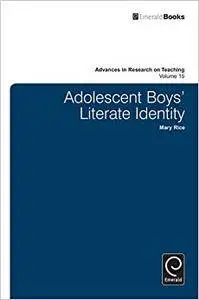Mary Rice, "Adolescent Boys' Literate Identity"
2011 | pages: 160 | ISBN: 0857249053 | PDF | 0,7 mb
2011 | pages: 160 | ISBN: 0857249053 | PDF | 0,7 mb
This book is the representation of a narrative inquiry conducted with five ninth grade boys that were identified as displaying multiple literacies, looking specifically at how these boys storied their literate identities. After the stories were collected, the author conducted several negotiation sessions with the boys and their parents at the school, as well as in their homes. These negotiations facilitated a methodological concept that the book terms distillation: an interim step for determining which narratives in an inquiry are emblematic. Several lenses for conceptualizing the stories of these boys were made evident during the research. An analysis of the collected stories revealed that the boys' stories moved beyond current conceptions of either identity or literacy alone and instead offered a way of defining literate identity as simultaneously being and doing literacy. In light of this definition, the boys' stories revealed plotlines that together described literate identity as a form of capital. The question of how the boys story themselves, the original research question, is ultimately answered using a meta-narrative, or archetype, where a hero distributes a boon, or gift to his society. The implications for this research include a need to examine classroom space in order to facilitate the deployment of literate identity capital, as well as space for living out the meta-narratives that these boys are composing.
Contents
Preface: Narrative Inquiry Hemstitches in this Research
Chapter 1: Literacy as a Game and its Players
Chapter 2: Dual Role Negotiation as Teacher and Researcher
Chapter 3: Shifting Tensions in Boys Stories to Live By About Literacy
Chapter 4: Literate Identity as Edible Capital
Chapter 5: Comedic Integration in Boys Stories of their Literacies
Chapter 6: Spaces for Composing Literate Narratives
Chapter 7: Boys Stories as a Practical Part of Classroom Life
Afterword
My Link



